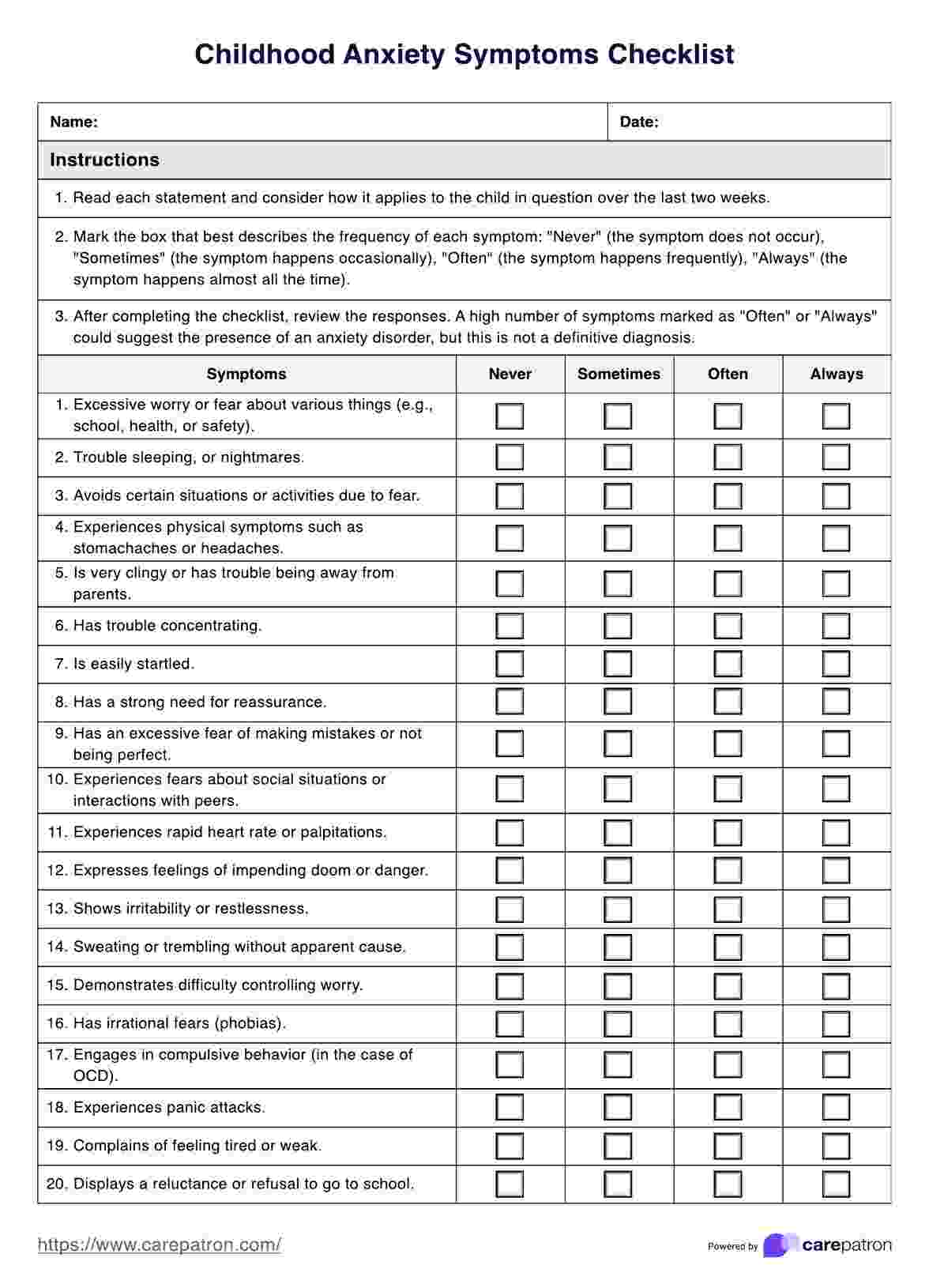Childhood Anxiety Symptoms Checklists are used by many people, including healthcare professionals like psychologists and pediatricians, educators like teachers and school counselors, and even parents who want to monitor their child's mental health.

Childhood Anxiety Symptoms Checklist
Discover our comprehensive Childhood Anxiety Symptoms Checklists, an essential tool for identifying early signs of anxiety in children. Free PDF download.
Childhood Anxiety Symptoms Checklist Template
Commonly asked questions
Childhood Anxiety Symptoms Checklists should be stored securely due to their sensitive information. Digital platforms like the Carepatron app offer secure, HIPAA-compliant storage solutions for these checklists.
Typically, an adult who knows the child well, such as a parent or teacher, completes the checklist. However, depending on the child's age and understanding, they may also be involved. Always consult with a healthcare professional for the most appropriate approach.
EHR and practice management software
Get started for free
*No credit card required
Free
$0/usd
Unlimited clients
Telehealth
1GB of storage
Client portal text
Automated billing and online payments











